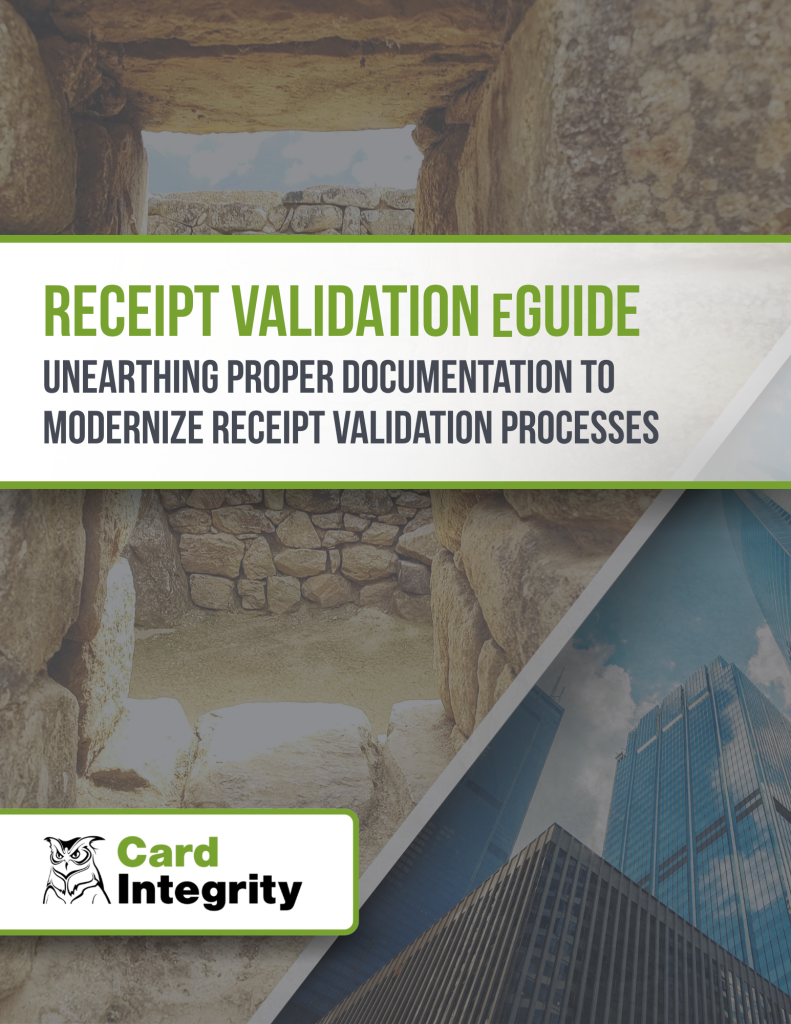Several methods have been constructed over the years to combat poor documentation practices and difficulties in receipt submissions. In this blog post, we will describe the strengths and weaknesses of some different approaches put forward.
100% manual review
100% manual review is fully constrained by human limitations. If the person, or people, responsible for your receipt review are trained to look for bad submissions, and have dedicated time as part of their job function to review all transactional receipts for your organization (including small-dollar transactions and out-of-pocket reimbursements), then having 100% manual review makes quite a bit of sense. Unfortunately, this is not the reality for most organizations. This type of menial, repeatable receipt reconciliation is generally considered lower-priority and is frequently done by employees that do not consider it a major component of their job function. To feasibly conduct 100% manual review internally, organizations often need to hire on additional talent.
Random selection
Another way to tackle receipt reconciliation is through the use of random selection. This method eases the workload on internal resources, but the weaknesses of this method are obvious and apparent. Organizations are essentially leaving it up to chance, willingly letting receipts go unvalidated. Those who use random selection may counter that its main purpose is as a deterrent, not as a foolproof method of ensuring policy compliance. If employees know there’s a chance that they could be caught, they may think twice about submitting invalid receipts… or so the thinking goes. Organizations need to weigh this decision carefully: how much random selection is “good enough”? And if there is any way that an organization can achieve 100% review, they can deter invalid receipts through strong, robust control rather than leaving it up to a dice roll.
High risk transactions
Some organizations will only validate receipts for what they determine “high risk transactions”. Much like random selection, doing this boils down to taking a shortcut. If an employee finds out how the organization determines what a high risk transaction is, it suddenly becomes even more vulnerable. This could happen due to word getting around, a clever employee guessing some things right and working it out on their own, or from a bad actor within the finance department. Not to mention, it over-relies on the methodology the organization uses to determine high risk transactions. Once again, anything less than 100% review leaves an organization prone to fraud and misuse.
Rotational coverage
Rotational coverage refers to involving multiple people or teams in the receipt reconciliation process. This can cut back on the workload on any one person, but it introduces inconsistency into the process, as no two people will complete the work to the same level of detail. This method also takes ownership of the project away from any one person, instead reducing it to a task that employees must “take turns on”.
Artificial intelligence
In recent years, AI platforms have exploded on to the scene, offering solutions for everyday challenges of all kinds. It’s no surprise that AI has already heavily influenced financial operations.
PwC report statistics
According to PwC’s 2024 Pulse Survey, CFOs are saying that they are adopting AI at an accelerated pace. Some of the specific metrics are eye-opening:
- 36% say that they are already using AI in Accounts Payable and Receivable, 34% are using it in the next 12 months
- 33% are using it for predictive analytics, 30% in the next 12 months
- 31% are using it for contractual compliance, 31% in the next 12 months
- 28% are using it for financial and external reporting, 39% in the next 12 months
Amazon Business report statistics
If these statistics weren’t enough to paint a picture, Amazon Business has reported similar findings: to say that procurement leadership plans to invest in AI is an understatement. According to a 2024 report by Amazon Business, 98% of respondents said that they were “planning investments in analytics and insights tools, automation, and AI for their procurement operations in the next few years”. 80% said within two years, and 45% said within one year. Additionally, almost half of respondents stated that they were already using AI-driven optimization of purchasing decisions (47%).
Virtually all respondents showed interest in learning about the use of AI in procurement, and they wanted specific insight into:
- Quicker or deeper data analysis
- Time savings
- Different systems to connect more seamlessly
KPMG report statistics
KPMG also released a report specifically about navigating through this new era of AI in 2024. Among their findings are:
- 10% of companies’ IT budgets are allocated towards AI
- 100% of companies said their boards had taken strategic action regarding AI
- 64% of companies expect auditors to have a role in evaluating use of AI in financial reporting
- 72% of companies are piloting or outright using AI in financial reporting. KPMG forecasts that it will raise to 99% in three years
It comes as no surprise that, as a result, AI platforms have been developed for the purpose of receipt validation and reconciliation. These platforms tend to rely on OCR technology (optical character recognition) to recognize text on the receipt and compare it to available information to ensure everything matches up properly to the associated transaction in the ERP portal. These AI platforms are not perfect, however. Users can “trick” the system by editing photos, or by covering the transaction amount on the receipt so that the system can’t read it, forcing a real person to have to look at it anyway for it to be approved. They may also be prone to false positives – even with advanced machine learning capabilities, AI does not have the context necessary to consider external data sources and understand the context of each expense.
That’s why Card Integrity recommends using AI as a tool, not as a “set it and forget it” platform.
The solution is simple… Receipt Validation from Card Integrity
Card Integrity’s receipt validation service, ReceiptWISE, allows organizations to achieve true 100% review. It shifts resources away from menial, repetitive work to free employees up to do more engaging, rewarding work than going through receipt submissions.
If you’re interested in learning more about receipt validation, check out our free eGuide below where we dive into details on what is a surprisingly nuanced topic. Receipt validation has changed a lot over time… this eGuide gets into the details of different methods, how problematic receipts slip through the cracks, and the importance of strong controls to properly validate transaction documentation.




